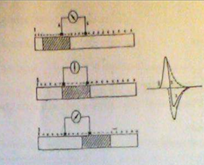(exactly essay 3) Physiology of excitable cells. Irritability and Excitability. General and specific properties of excitable cells. Membrane potential - ionic basis of the membran epotentials. Measurement fo excitability. Changes in the excitability during excitation. Inhibition. Conduction of excitation
1/15
There's no tags or description
Looks like no tags are added yet.
Name | Mastery | Learn | Test | Matching | Spaced |
|---|
No study sessions yet.
16 Terms
section
excitable tissues
nervous tissue
RMP (resting membrane potential) depends on
characteristics of resting nerve cell membrane
characteristics of muscle
function of muscle
types of muscle
Endocrine tissue
excitable tissues
tissues capable of generating and transmitting electrochemical impulses along the membrane.
Nervous - via neurons
muscle - nerves conducting mpulses to muscles → conductors
Some endocrine tissues- insulin-releasing pancreatic β cells.
nervous tissue
The human nervous system consists of many nerve cells (or neurons) plus supporting (neuroglial) cells.
Neurons- communicate
Respond to stimuli
Extending out from the cell body are processes called dendrites and axons.
conduct impulses (with dendrites conducting impulses toward the cell body
axons conducting impulses away from the cell body
Neurons can respond to stimuli and conduct impulses because a membrane potential is established across the cell membrane.
Membranes have a RESTING MEMBRANE POTENTIAL. - an unequal distribution of ions (atoms with a positive or negative charge) on the two sides of the nerve cell membrane.
This POTENTIAL about -70 mV (with the INSIDE of the membrane negative due to more ions outside nerve membrane)
RMP (resting membrane potential) depends on
Distribution of ions across membrane (extracellular ions and intracellular ions);
membrane permeability activity of Na-K pump
SODIUM - POTASSIUM PUMP actively pumps out 3 Na+ out for every 2K+ in → less positive inside
membrane is more permeable to k+ so they diffuse back out of cell. less name positive
These gates represent the only way that these ions can diffuse through a nerve cell membrane.
characteristics of resting nerve cell membrane
all the sodium gates are closed and some of the potassium gates are open.
This potential will be maintained until the membrane is disturbed or stimulated.
If there is a strong stimulus greater than the threshold, an AP will occur. → depolarisation = disturbance
(*The membrane potential of excitable tissues is more negative (-70 to -90 mV) compared to that of non-excitable tissues.)
characteristics of muscle
excitability - responds to stimuli (e.g., nervous impulses)
contractility - able to shorten in length
extensibility - stretches when pulled
elasticity - return to original shape & length after contraction or extension
function of muscle
Motion - movement of trunk and limits
maintenance of posture
heat production - shivering → vibration causes friction = heat
types of muscle
skeletal: voluntary muscle. Moves skeleton and striated muscles = heat
Smooth: involuntary muscle, muscle of the viscera (e.g., in walls of blood vessels, intestine ) - urinary bladder, spindle-shaped
Cardiac: involuntary, striated
Endocrine tissue
The endocrine system includes cells of the glands of the body and the hormones produced by them
glands are controlled directly by the nervous system as well as by chemical receptors in the blood and hormones produced by other glands.
The endocrine system regulates its hormones through negative feedback, except in very specific cases like childbirth.
section
define excitation
process when there is an electrical stimulus
action potential
saltatory conduction
inhibition
define excitation
excitable cells react to irritation or stimulation
excitation: process of producing an action potential
local respons
-A local response happens when a weak stimulus slightly changes the membrane potential but doesn’t trigger an action potential.
Na⁺ ions must enter the cell in large enough numbers to open sodium channels and start an action potential.
This can be caused by mechanical, chemical, or electrical stimulation.
A weak or subthreshold stimulus (like at point A or B) only causes a small membrane change (e.g., from –95 mV to –85 mV) — no action potential occurs.
When the stimulus is strong enough to reach the threshold, an action potential is generated.
A lower threshold means the membrane is more excitable and can respond even to a weaker stimulus if it lasts long enough.
action potential
At rest, there is no action potential between electrodes A and B — the oscilloscope ray stays on the zero line.
When a strong stimulus is applied, depolarization begins.
As depolarization reaches electrode A, its surface becomes negative compared to B — the oscilloscope ray moves upward.
When the signal reaches electrode B, both electrodes are equally excited — the ray returns to zero.
When the area near electrode A repolarizes, it becomes positive compared to B — the ray moves downward.

action potential simply
depolarisation = transient increase in membrane permeability to Na^+ so membrane becomes more positive Na^+ channels open
Repolarisation = closing of Na^+ channels and opening of K channels, membrane becomes negative again → over shoots
resting membrane potential = hyperpolarisation so Na/K pump brings back to RMP
saltatory conduction
AP’s are unable to pass through myelin sheath of nyleinated neurones
there are gaps between myelin sheath that expose the membrane - nodes of Ranvier
Impulse jumps across axons - saltatory conduction, increases velocity of nerve transmission
inhibition
Membrane-stabilizing factors can decrease excitability.
e.g., a high extracellular fluid calcium ion concentration
decreases membrane permeability to sodium ions and simultaneously reduces excitability.
Therefore, calcium ions are said to be a “stabilizer.”
Tetrodotoxin is a sodium channel blocker-inhibits firing of AP